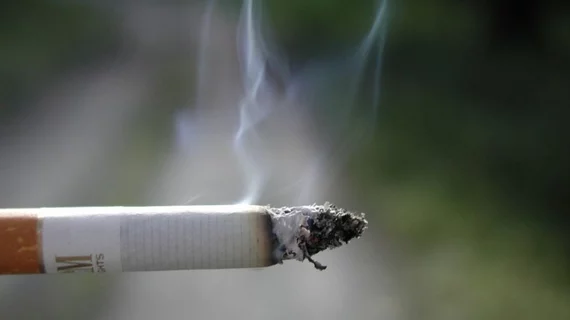When pregnant women inhale secondhand smoke—including from prospective fathers—it may be even more dangerous to their offspring than if the women smoke themselves, according to a meta-analysis published in the European Journal of Preventive Cardiology.
The analysis encompassed 125 studies involving 8.8 million prospective parents and 137,574 babies with congenital heart defects (CHDs). All types of parental smoking were associated with an increased risk of a baby having a CHD, but passive smoking in women was associated with the highest risk—a 124 percent increase in the odds of a CHD. Paternal smoking was next at a 74 percent increase, while maternal smoking was linked to 25 percent higher odds compared to no smoking exposure.
Passive smoking was defined as involuntary inhalation of secondhand smoke.
Senior author Jiabi Qin, MD, PhD, and colleagues noted previous meta-analyses on this topic have only focused on the mothers’ smoking habits. But that leaves a big piece of the danger unstudied, as exposure to secondhand smoke is far more common.
“Fathers-to-be should quit smoking,” Qin, with Central South University in Changsha, China, said in a press release. “Fathers are a large source of secondhand smoke for pregnant women, which appears to be even more harmful to unborn children than women smoking themselves.”
Qin suggested women stop smoking before trying to conceive and attempt to stay away from secondhand smoke once becoming pregnant.
“Doctors and primary healthcare professionals need to do more to publicize and educate prospective parents about the potential hazards of smoking for their unborn child,” he said.
In terms of specific defects, maternal smoking was associated with a 27 percent higher chance of atrial septal defect and a 43 percent greater risk of right ventricular outflow tract obstruction when compared to no smoking.
Many of the included studies didn’t report a duration and severity of paternal smoking, which made it impossible to explore a potential dose-response relationship between smoking and CHDs. In addition, there are likely to be confounding factors related to genetics and a mother’s comorbidities that also play a role in CHD development. Finally, more than half of the included studies were from Asia, which limits the generalizability to other populations.

